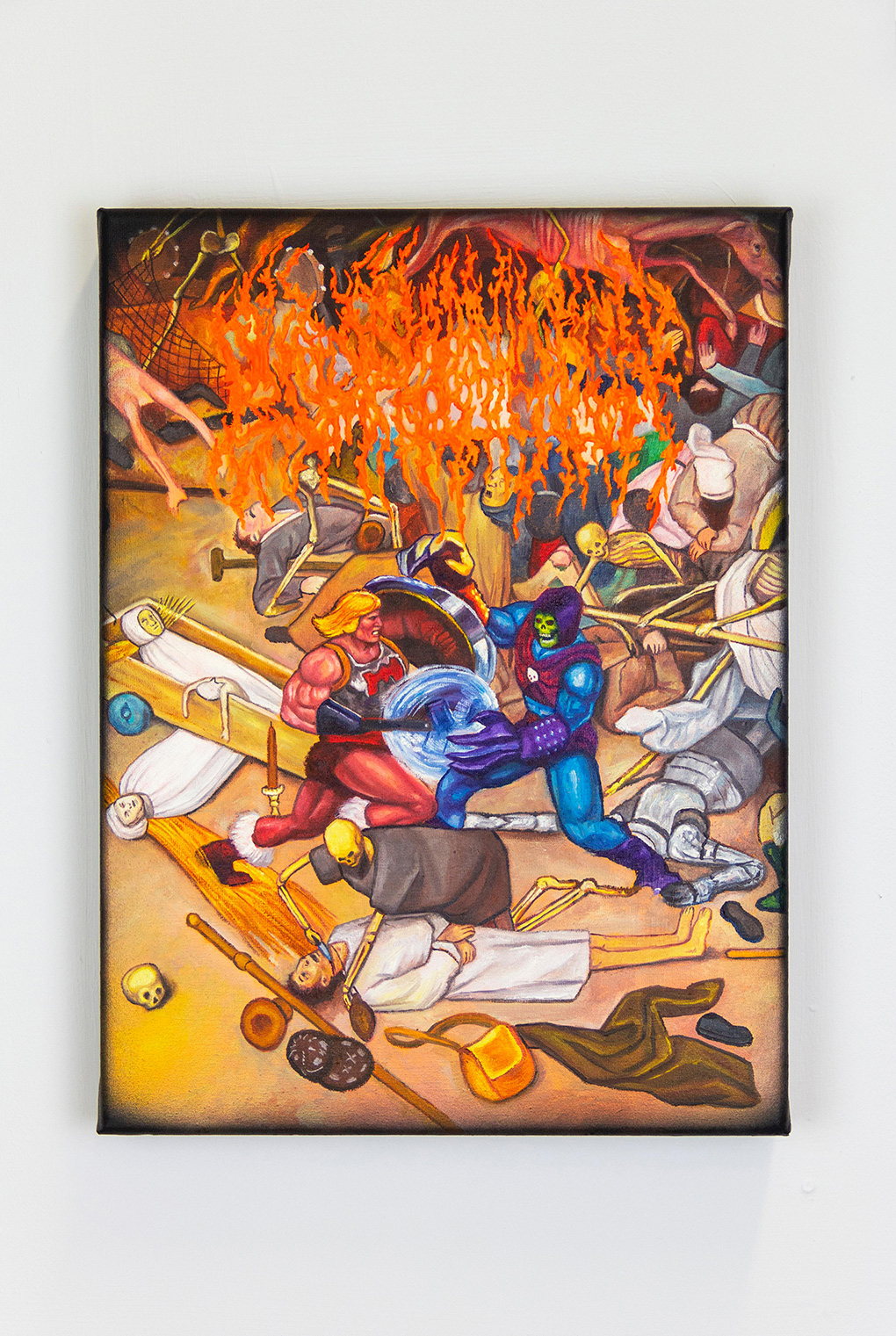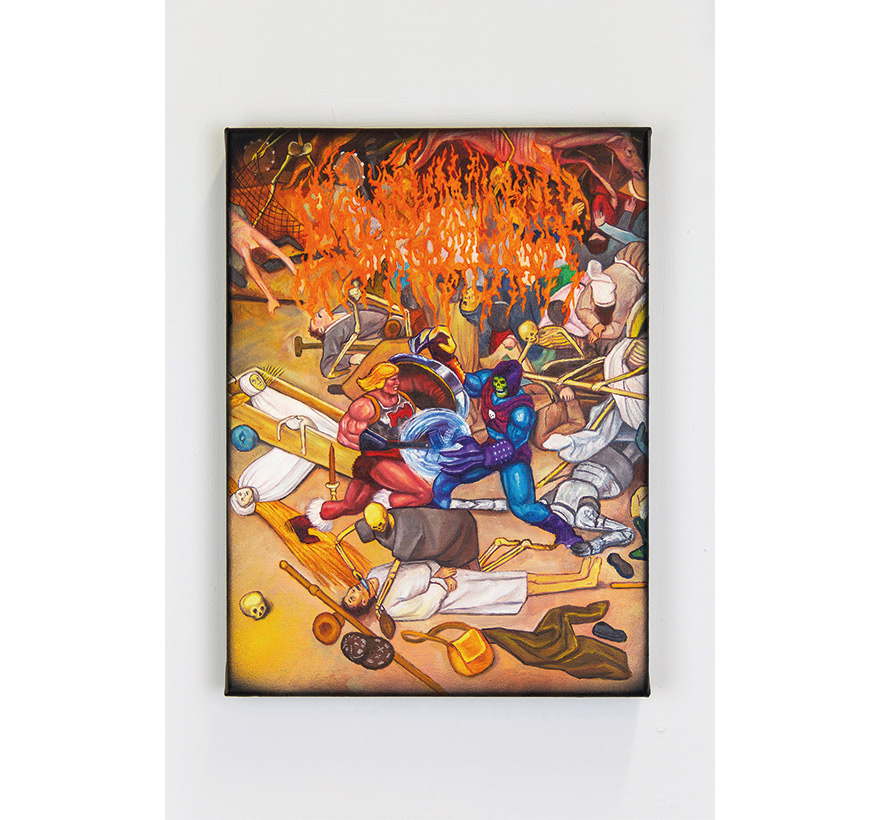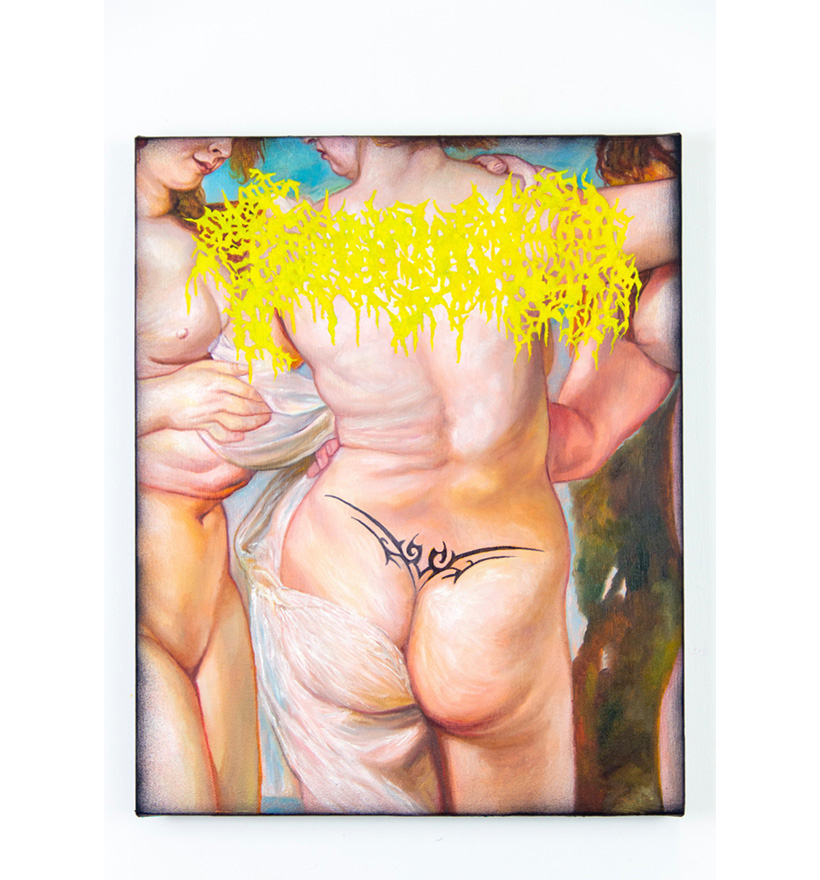Nicolas Romero
Buenos Aires, 1985
He moved away from graffiti to start working with faces, many of them political figures with whom he experimented and played with their symbolic charge in the street, and from which spurts of life and colour emanated, while his studio work was filled with flesh and female and male bodies. In his “Still Lifes”, with which he has been working for the last few years, Nicolás has found another way of using the image as a form of social reflection. “I realised that through objects and symbols I could say many more things,” he says. Kittens, poodles, drones, aubergines, figs, flowers, classic works of art, contemporary icons and other elements that he finds in the immediate territory where he makes his mural interventions are intermingled in his chaotic and surreal still lifes.
More about the artist
Nicolás Romero began twenty years ago signing Ever (@eversiempre) and doing graffiti in the streets of his hometown, which
graffiti in the streets of his hometown, which was living the hangover of a military dictatorship that had lasted eight years and which at that time understood street art as an expression of freedom.
and at that time understood street art as an expression of freedom.
At present, Nicolás develops his studio work around the “Naturalezas Muertas” (Still Lifes), with which he
through the union of elements he has found a way to use the image as a form of social reflection and anthropological research.
social reflection and anthropological research. He works through the traces he finds in his immediate context, the result of the
the result of the social fabric and symbols born of the coexistence of social, cultural and economic factors.
social, cultural and economic factors. From bottles of soft drinks to religious prints, political symbols
political symbols, contemporary icons or something as seemingly innocent as fruit and vegetables form part of these compositions that he uses as a
These compositions are used as a bridge to talk about more complex realities.
It is precisely this confluence between the still lifes and this connection with his childhood, and
pushed by times in which society was changing its behaviour in the face of a global pandemic, which
a global pandemic, which led him to give architectural form, specifically gundam, to these still lifes, bringing to life
giving life to beings dressed up in standardised consumer items – anonymous and global identities – through the
anonymous, global identities – through their bodies.
Romero has had solo exhibitions at Ochi Projects Gallery (Los Angeles), The Diogenes Club (Los Angeles), Galleria Varsi (Varsi Gallery), The Diogenes Club (Los Angeles) and The Diogenes Club (Los Angeles).
Angeles), Galería Varsi (Rome), Galería Libertad (Querétaro) and Dinámica Gallery (Buenos Aires). He has
participated in group shows in Studiocromie (Italy), Marian Cramer Projects (Amsterdam and Paris), Fir Gallery (Shanghai), and
Paris), Fir Gallery (Shanghai) and Cerquone Gallery (Madrid), and in other countries such as France, South Africa, Austria, Australia, Mexico and Mexico City,
South Africa, Austria, Australia, Mexico and the United States. He has done illustrations for the print versions of
New York Times Magazine and ZEIT Magazine.
His work has been selected for cultural institutions such as the Fundación Santander, Museo Amalia Fortabat and Palais de Glace.
Fortabat and Palais de Glace, all three in Buenos Aires, the Macro Museum in the city of Rosario or the
Biennial of urban interventions at the CCEC and the Caraffa Museum in Córdoba, Argentina.




